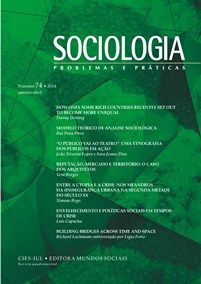How only some rich countries recently set out to become more unequal
DOI:
https://doi.org/10.7458/SPP2014743198Abstract
There is a widespread perception that income inequalities have grown across the rich world in recent decades. This is not the case. In many countries inequalities have been stable and in a few they have fallen. Different measures of inequality result in different trends being observed. Here the income share of the best-off 1% is tracked for some 11 countries out of the world’s richest 26 large nation states to illustrate that far from it being normal to see the rich always taking more, for much of the last century in almost all these countries it was normal for the income share of the rich to be falling, and in some their share remains low while in a few it has continued to fall. It is only in countries such as the USA, UK and Canada that the richest 1% are currently again taking historically high shares of national income, and where their take appears to have been rising in the last decade. In most Scandinavian countries, Germany, France and Japan the take of the best-off 1% is much lower. In the Netherlands and Switzerland the take of the best-off 1% is low and falling. This paper speculates a little as to why, and with what consequences. Data for China and India is included to aid comparisons with the majority world.Downloads
Issue
Section
Articles
License
Authors who publish in this Journal must agree the following terms and conditions:
- Authors retain copyright and grant the Journal the right to first publication, while simultaneously agreeing to a Creative Commons Attribution License, which allows others to share their work on condition that they cite the original author(s) and recognise that the latter’s work was first published in this Journal.
- Authors are authorised to enter into additional contracts separately, for non-exclusive distribution of the version of the work that is published in this Journal (e.g. publication in an institutional repository or as a book chapter), subject to recognition of initial publication in this Journal.



